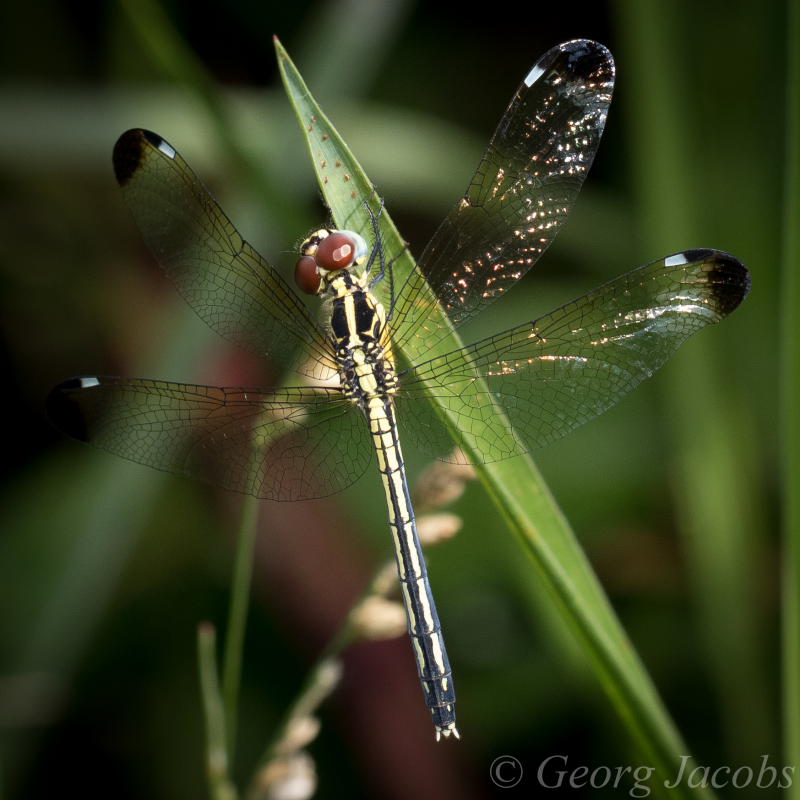View the above photo (by Georg Jacobs) in OdonataMAP here.
Find this species in the FBIS database (Freshwater Biodiversity Information System) here.
Family Libellulidae
Hemistigma albipunctum – AFRICAN PIEDSPOT
Identification
Small Size
Length up to 38mm; Wingspan reaches 63mm.
Males are distinctive, but can be mistaken for an Orthetrum species or Chalcostephia flavifrons (Inspector).
Males are recognised by their bi-coloured pterostigmas and the smoky streaks in the forewings. The slender abdomen and black and white face are also helpful identification features.
Females are identified by the bi-coloured pterostigmas and black-tipped wings. The cream-coloured stripe running from behind the eyes to the start of the abdomen is distinctive.
Click here for more details on identification.
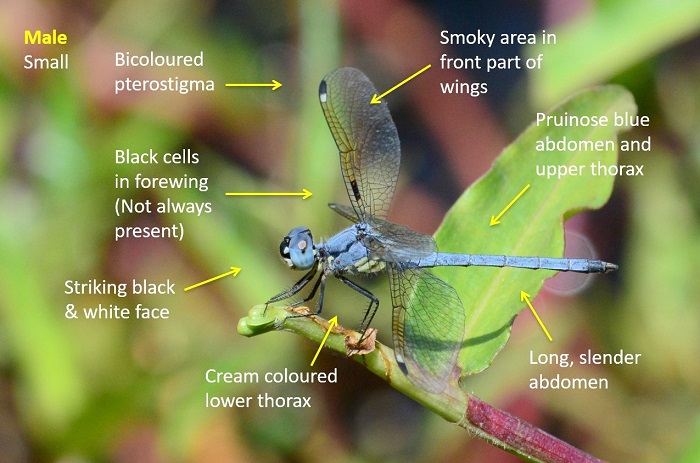
Near Hluhluwe, KwaZulu-Natal
Photo by Ryan Tippett

Isimangaliso Wetland Park, KwaZulu-Natal
Photo by Ryan Tippett
Habitat
Frequents the still or slow-moving reaches of marshes, floodplains, pans, dams and rivers. Favours sites with an abundant growth of sedge, grasses and reeds in shallow water. Occurs mostly in the warmer coastal and savanna regions.

Near Hluhluwe, KwaZulu-Natal
Photo by Ryan Tippett
Behaviour
Perches on plant stems over the water. Hunts from a perch and usually re-settles at a different spot. Often fairly confiding when approached.
Status and Conservation
Hemistigma albipunctum is locally common in South Africa. Listed as of Least Concern in the IUCN Red List of Threatened Species. Readily utilises suitable man-made habitats.
Distribution
Widespread across Sub-Saharan Africa, occuring in West, Central, East and Southern Africa. Hemistigma albipunctum is confined to the North-East of South Africa. It is found in the Limpopo, Mpumalanga and KwaZulu-Natal provinces. Most common in coastal KwaZulu-Natal.
Below is a map showing the distribution of records for African Piedspot in the OdonataMAP database as at February 2020.
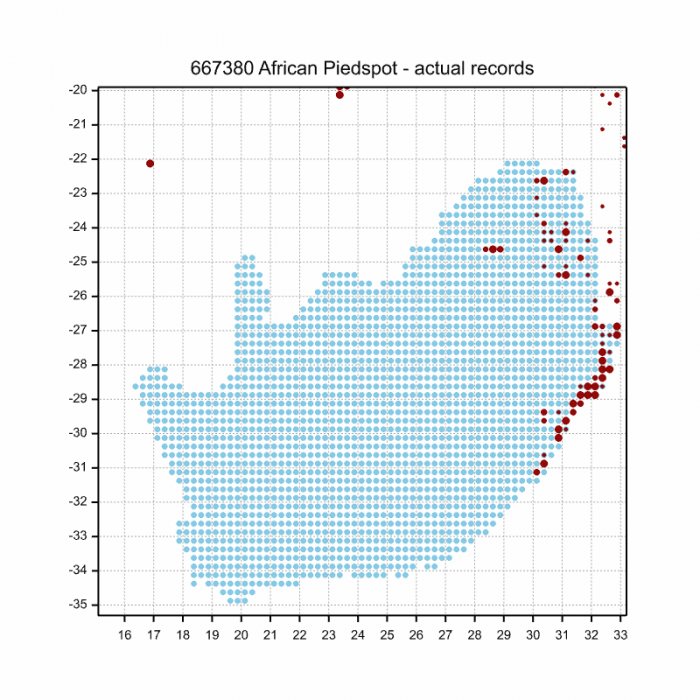
The map below is an imputed map, produced by an interpolation algorithm. It attempts to generate a full distribution map from the partial information in the map above. This map will be improved by the submission of records to the OdonataMAP section of the Virtual Museum.
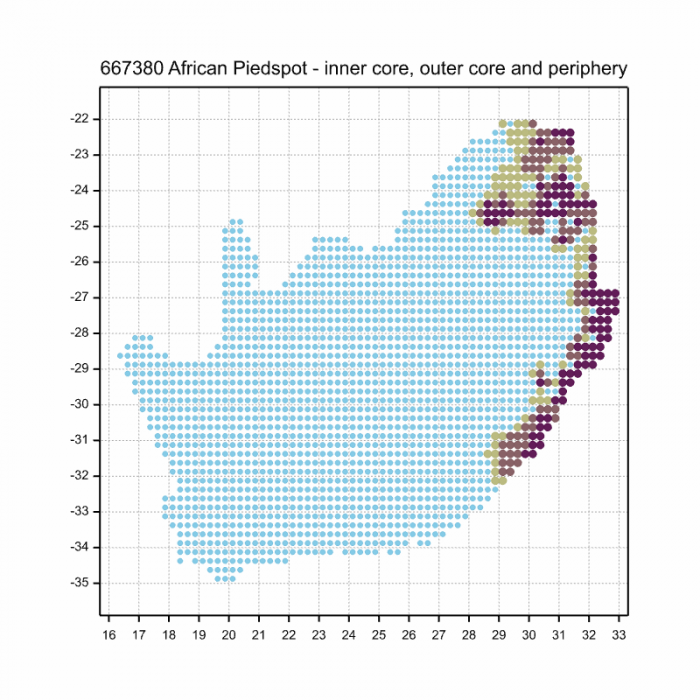
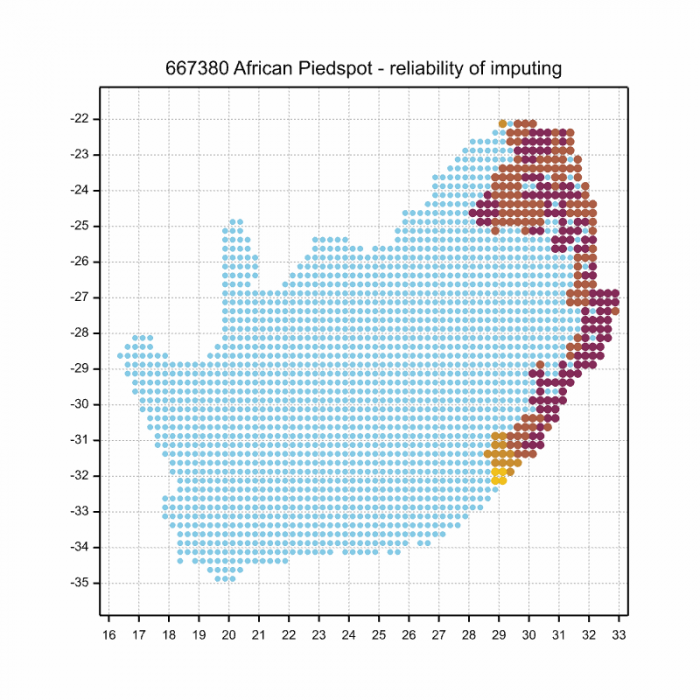
Ultimately, we will produce a series of maps for all the odonata species in the region. The current algorithm is a new algorithm. The objective is mainly to produce “smoothed” maps that could go into a field guide for odonata. This basic version of the algorithm (as mapped above) does not make use of “explanatory variables” (e.g. altitude, terrain roughness, presence of freshwater — we will be producing maps that take these variables into account soon). Currently, it only makes use of the OdonataMAP records for the species being mapped, as well as all the other records of all other species. The basic maps are “optimistic” and will generally show ranges to be larger than what they probably are.
These maps use the data in the OdonataMAP section of the Virtual Museum, and the database assembled by the previous JRS funded project, which was led by Professor Michael Samways and Dr KD Dijkstra.

